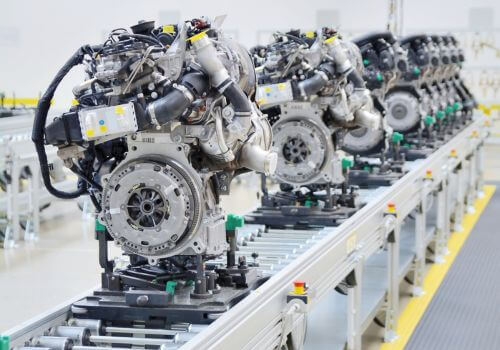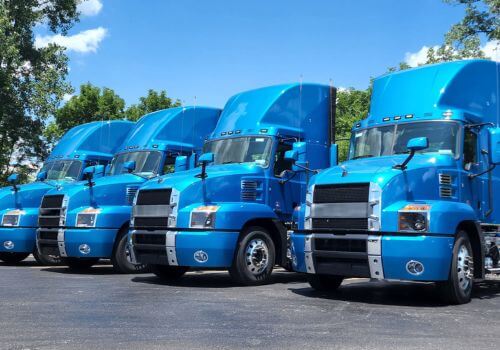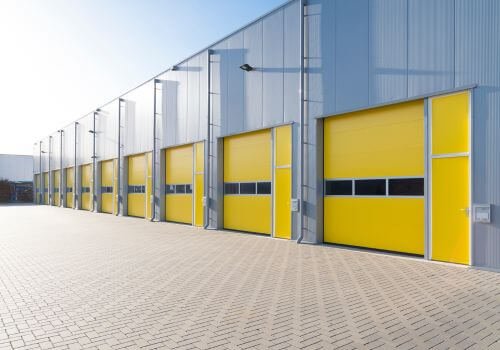In today’s fast-paced e-commerce and retail environment, fulfillment centers are under increasing pressure to deliver orders faster, more accurately, and at lower costs. Meeting those expectations starts with an optimized warehouse picking strategy. Among the most effective of these strategies is zone picking, a method that improves speed, reduces labor strain, and minimizes errors by assigning workers to specific zones within the warehouse.
Zone picking is not only a way to simplify operations, but also a foundation for scalability and automation. In this guide, we’ll take a detailed look at what zone picking is, how it works, when to use it, the technologies that support it, and how it compares to other fulfillment methods. Whether you manage a small warehouse or a complex distribution center, understanding zone picking can help transform your fulfillment process and keep your customers satisfied.
What is zone picking?
Zone picking is a warehouse picking method where the facility is divided into multiple areas or “zones,” each staffed by one or more dedicated pickers. Instead of having one person walk the entire warehouse to gather all items for an order, pickers remain within their assigned zones and are responsible only for the SKUs located there.
When an order contains products from multiple zones, each picker retrieves the relevant items from their area. These items are then consolidated at a central location, typically a packing station, before the complete order is shipped. This system is often referred to as a “pick and pass” model because the order moves from one zone to another, either physically or through coordination using a warehouse management system (WMS).
Zone picking is particularly effective for high-volume, high-SKU environments where orders frequently include items stored in different areas of the facility. It minimizes picker travel time, reduces floor congestion, and increases efficiency through specialized knowledge and workflow segmentation.
How does zone picking work?
Implementing zone picking requires a structured process and, ideally, support from technology to manage order distribution and consolidation. Here’s a step-by-step breakdown of how zone picking functions in a typical warehouse environment:
1. Dividing the warehouse into zones
The first step is physically organizing the warehouse into distinct zones. This zoning can be based on product characteristics (e.g., size, weight, temperature sensitivity), storage method (e.g., pallet racking vs. bin shelving), picking frequency (fast-moving vs. slow-moving items), or simply location. For example, Zone A might include electronics, Zone B includes clothing, and Zone C stores accessories.
2. Assigning pickers to zones
Each zone is staffed with one or more pickers who are trained to operate within that specific section. Pickers become familiar with the layout, storage positions, and product types in their zone, allowing them to work quickly and with greater accuracy.
3. Order decomposition and distribution
When an order is received, it is automatically split into zone-specific tasks by the WMS. For instance, if a customer orders five items and those items are located in three separate zones, the system breaks the order into three sub-tasks and routes them to the respective pickers.
4. Picking and passing
Pickers retrieve the required items in their zone and either pass the order tote to the next zone or send their picked items to a central consolidation area. Some operations use conveyor belts or autonomous mobile robots (AMRs) to transport the totes between zones.
5. Order consolidation and packing
Once all zone pickers have completed their tasks, the items are merged into a complete order. At the packing station, workers verify order accuracy, prepare the shipment, and label it for delivery.
Zone picking streamlines the picking process, especially for facilities that handle thousands of SKUs and multiple orders simultaneously. It also lays the groundwork for automation and advanced analytics.
What are the benefits of zone picking?
Zone picking offers significant operational improvements. While it may involve a more complex setup compared to simpler methods, the benefits it brings to mid and large-scale fulfillment centers are well worth the investment.
Reduced travel time and picker fatigue
In traditional piece-picking models, a single picker might walk several miles in a shift just to complete orders. In contrast, zone picking minimizes movement by restricting each picker’s work area. This not only saves time but also reduces physical strain, contributing to lower fatigue and fewer workplace injuries.
Faster and more efficient order fulfillment
Because multiple pickers can work on different portions of the same order at the same time, the overall cycle time is significantly reduced. Instead of one person sequentially gathering each item, zone picking enables parallel processing, which increases throughput and shortens order lead times.
Improved accuracy through specialization
Pickers assigned to a single zone become more familiar with the layout, bin locations, and specific product identifiers in that area. This reduces the chance of mispicks or overlooked items, resulting in better accuracy and fewer customer complaints or returns.
Greater flexibility in labor allocation
Zone picking allows warehouse managers to adapt quickly to changes in order volume or SKU demand. If Zone A experiences higher order volumes during peak season, extra labor can be assigned there without disrupting other zones. This flexibility is crucial for scaling operations without redesigning the entire workflow.
Supports future automation
Zone picking serves as a modular structure that’s ideal for integrating automation. AMRs, automated guided vehicles (AGVs), and conveyor belts can easily be introduced into zone-based workflows, especially for transporting picked items between zones or to the packing area. This makes future scalability and investment in robotics more achievable.
What are the challenges and limitations of zone picking?
Despite its advantages, zone picking isn’t without its challenges. Operations must account for several variables to ensure the system works efficiently from end to end.
Complexity in coordination and consolidation
One of the biggest challenges of zone picking is ensuring that all picked items are merged correctly at the consolidation stage. If items from one zone are delayed or misplaced, the entire order could be held up. A sophisticated WMS is essential for tracking orders in real time and managing dependencies between zones.
Bottlenecks in high-demand zones
Not all zones experience equal volume. Zones with fast-moving items can become bottlenecks if not staffed appropriately. Without proper workload balancing or zone reconfiguration, high-demand zones can slow down the entire picking process.
Higher initial setup costs
Designing an efficient zone picking system requires investment in layout redesign, staff training, and potentially new software or automation systems. For smaller warehouses, this upfront cost may outweigh the long-term benefits.
Dependence on technology
Manual zone picking is possible but less efficient and more error-prone. A WMS capable of handling zone logic, order decomposition, and real-time tracking is crucial. Without this, communication gaps and miscoordination can lead to costly delays and customer dissatisfaction.
Zone picking vs. other picking methods
To determine if zone picking is the right strategy, it’s important to compare it with other commonly used picking methods in fulfillment centers.
Zone picking vs. discrete order picking
Discrete picking, or piece picking, involves one worker fulfilling one order at a time. It’s simple and easy to manage, but highly inefficient in large warehouses due to excessive travel time. Zone picking eliminates this inefficiency by dividing the work among pickers in predefined areas.
Zone picking vs. batch picking
Batch picking allows a picker to gather items for multiple orders simultaneously. This method reduces travel but increases complexity, especially if SKUs are similar or stored far apart. Zone picking, when combined with batch processing, can balance both speed and accuracy by limiting each batch to a specific zone.
Zone picking vs. wave picking
Wave picking organizes orders into waves based on shipping schedules or cutoff times. While effective for time-sensitive fulfillment, wave picking still requires strategic coordination. Zone picking can be layered into wave-based strategies to enhance throughput and reduce missed deadlines.
Zone picking vs. cluster picking
Cluster picking involves picking items for multiple orders at once using totes or bins organized by order. It is efficient but requires careful sorting after picking. Zone picking is more structured and often more suitable for operations needing consistency and low error rates.
When should you use zone picking?
Zone picking is not ideal for every operation. It performs best in the following scenarios:
- Large or complex warehouse layouts where walking distances are long and labor needs to be distributed efficiently.
- High order volumes with frequent multi-line orders requiring picks from different locations.
- Wide SKU variety that necessitates organized zones based on product category or storage type.
- Consistent demand patterns that allow for stable zone assignments without constant reconfiguration.
If your facility handles thousands of orders per day or struggles with congestion and inefficiency, zone picking can be a game-changer.
What are some technologies that power zone picking in warehouses?
Technology is essential to making zone picking viable, especially in large-scale environments. Key technologies include:
Warehouse management system (WMS)
A WMS is the digital backbone of any zone picking strategy. It manages zone mapping, order routing, task allocation, and real-time inventory updates. Without a WMS, coordinating zone-based picking at scale is nearly impossible.
Pick-to-light and voice picking systems
These systems guide workers with lights or voice instructions, telling them exactly where to go and what to pick. This reduces training time, enhances speed, and improves accuracy.
Conveyors and autonomous robots
Conveyor belts and AMRs streamline the transfer of totes between zones or toward the packing station. They eliminate the need for manual transport, saving time and reducing the risk of damage or loss.
Mobile devices and scanners
Handheld barcode scanners and mobile devices allow pickers to receive instructions, verify item details, and update the system instantly, creating a seamless digital workflow.
Frequently asked questions about zone picking
Q1. How does zone picking improve warehouse efficiency?
A1. Zone picking reduces travel time, enables parallel order fulfillment, and allows for specialization within zones, leading to faster, more accurate picking.
Q2. Can you combine zone picking with other strategies?
A2. Yes, zone picking can be combined with batch or wave picking to meet specific operational goals, especially during peak periods.
Q3. What kind of warehouse layout works best for zone picking?
A3. A layout that supports clear segmentation of storage areas and minimizes cross-zone overlap is ideal. It should also facilitate smooth item transport between zones.
Q4. Is a WMS necessary for zone picking?
A4. While not strictly required, a WMS significantly enhances the efficiency and accuracy of zone picking by automating order routing and tracking.
Q5. How do you handle consolidation in zone picking?
A5. A dedicated consolidation area or automated conveyor system is used to merge items picked from different zones into one complete order before packing.
In summary, Zone Picking is a warehouse order fulfillment strategy where the facility is divided into specific areas or “zones,” each assigned to dedicated pickers who are responsible only for the items within their designated zone, allowing for simultaneous multi-zone picking and improved efficiency, accuracy, and labor optimization across complex or high-volume operations.







